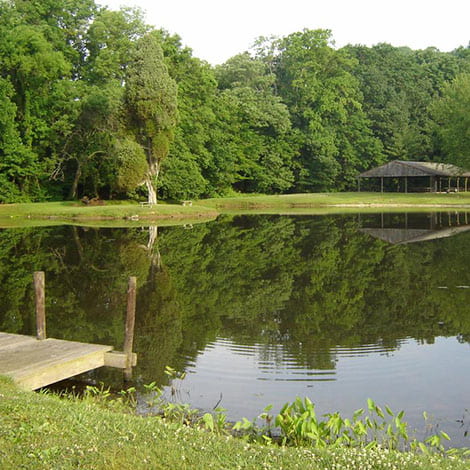A: Surface area and pond depth are important measurements to know. They'll help you determine dosage rates for chemicals like algaecide. They'll help you calculate the right-size aeration system for your pond. And they'll help you figure out how many and what types of fish to stock. Finding those magic numbers isn't difficult – but it does require some tools, the right equation and a little bit of work. Before you head out to your pond, grab a rope marked at 1-foot increments, a weight that's heavy enough to sink to the bottom, and something for notetaking.
Calculating Surface Area
The easiest ponds to measure are those that resemble a rectangle, but you can figure out the surface area of a circular, triangular or odd-shaped pond, too. First, you'll need to measure (with your marked rope) or pace off (one step is about 3 feet) some specific distances, depending on the shape of your pond. Then, plug those numbers into one of these formulas:
- Square/rectangle: Calculate length and width; L x W = Surface Area
- Circle: Calculate radius; Pi x R2 , or 3.14 x R x R = Surface Area
- Triangle: Calculate base and height; (0.5 x B) x H = Surface Area
- Odd-shaped: Use a handy online tool like Bing Maps to measure the pond. Online tools may be easiest, especially for irregularly shaped ponds.
To determine how many acres your pond is, you'll then divide that surface area figure by 43,560 (one acre).
Calculating Depth
Figuring out your pond's depth is a bit trickier, particularly if you have plant shelves or if the pond has a slope. Grab your marked string, the weight, something to write with, and a boat or canoe. Then, head out to the pond and follow these directions:
- Securely attach the weight to one end of your string.
- Climb aboard your boat or canoe with your weighted string and note-taking materials in hand.
- Travel to at least five points in various areas your pond, more if your pond is particularly large.
- Drop the weight into the water and note where you feel it hit the bottom. Repeat until you've gone to all the different spots and gathered a good sampling of your pond's depth.
If math isn't one of your favorite subjects, just take your measurements and plug them into our
pond calculator. Simply select your pond type and shape, enter your measurements and let the calculator do the math!
Why They're Important
Now that you know your pond's size, why are those calculations important? You'll need the numbers to determine dosage rates on products like those found in the
ClearPAC Plus. If the pond has been around more than three to five years, chances are good that you'll need to address problems like muck accumulation and string algae growth in the spring. Those numbers will also help you select the right-size EcoSeries Fountain and Airmax Aeration System. For instance, if your pond is less than 6 feet deep, the Shallow Water Series Aeration System is a good choice; if your pond is greater than 6 feet deep, the PondSeries Aeration System is the one for you. Since you'll be able to calculate how many acres your pond is, you'll also be able to determine what types of fish you can have and how many of them you can keep. Finally, because you'll know the various depths of your pond, you'll be able to stake out safe swimming areas for children.

